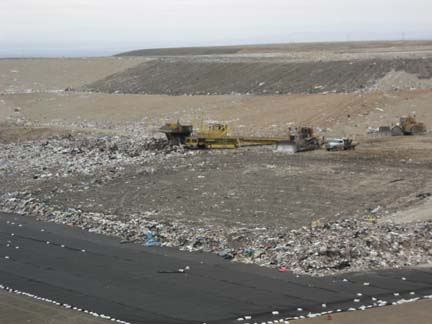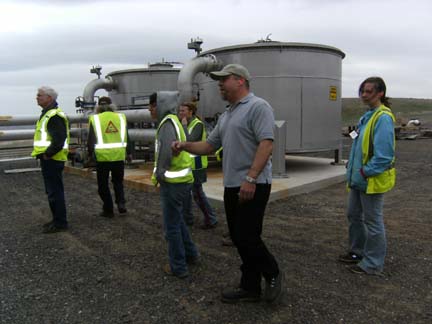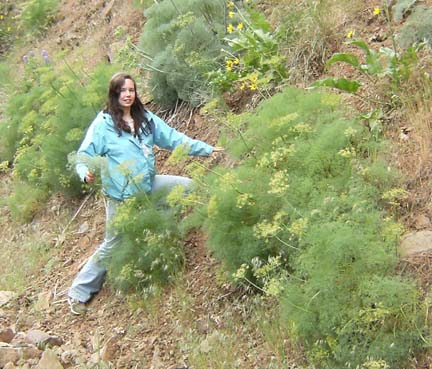Landfill Tour
Orly describes where our trash goes
This week we all took a tour of the landfill in Roosevelt, WA. We learned a lot and started to understand how landfills work and the issues associated with our trash. We started off learning the basic steps in creating landfills.
the main landfill
 |
| |
This plot of land in Roosevelt was particularly good for a landfill because it is desolate, it gets very little rain during the year, so the concern of ground water contamination is lessened, and it is close to the railroad, making it easy to haul trash in. This particular landfill receives waste from as far north as Alaska to as far south as Northern California. Over 300 40' long shipping containers of waste are received each day, six days a week.
Our tour guide explained how large pits are dug and showed us the material used to prevent leachate waste from seeping into the ground water. We went out to the pit site and witnessed the vast amounts of garbage, the most noticeable feature of which was the standard plastic shopping bag. They were everywhere, flapping in the strong wind. So many of them get swept up in the wind that there were rows of fences and plants specifically to catch them and crew members whose sole task is to collect them from where ever they get caught.
We learned about issues of vectors such as seagulls which scavenge for food in the landfill and poop on the workers. We even got to meet the falconer hired expressly to help scare away the winged pests. It was a real treat to watch him unleash one of his 3 falcons and see the other birds instantly take off in the other direction.
the falcon about to go to work
 |
| |
Our trip was important for two reasons. Firstly, to maintain awareness of what we consume and where it ends up. We throw our trash away, but often we don't think of where and what "away" is or looks like. We tend to forget what is not right in front of us and being conscious of the full circle is key to living sustainably.
Secondly, we learned about the waste decomposes into methane, a powerful greenhouse gas which they collect and use to power huge engines that generate electricity.
Walt:
That last part is my favorite part of the landfill tour since the techniques they use to capture and process the landfill gas is very similar to the ways that we'll have to process the gases given off by the pyrolysis of woody biomass before it can be fed into the reactor to produce methanol fuel.
the hydrogen sulfide absorbers
 |
| |
The primary purpose of the generation station is to insure that as little methane gas is released into the atmosphere as possible, but the income from the electricity they sell to the grid covers the cost of collecting the methane, and that's a key feature of sustainability.
But what intrigues me most as a communitarian is that they're burning 10,000 BTUs of methane to generate 3,400 BTUs of electricity, venting the remaining 6,600 BTUs of energy as waste heat. The landfill is located in an expanse of high-desert such that one feels like it's on the very edge of the universe, but if this were being done in a community setting, that huge amount of heat being vented to the atmosphere in the form of water vapor, could be used to provide homes and workspaces with heat in the winter and cooling in the summer. Which is why the energy systems we're working on are being developed to supply heating, cooling, electricity, fuel and charcoal--the more diverse the output, the better.
Monica stops to gather wild dill on the way home
 |
| |
Notes From Windward - Index - Vol. 68
|
|



